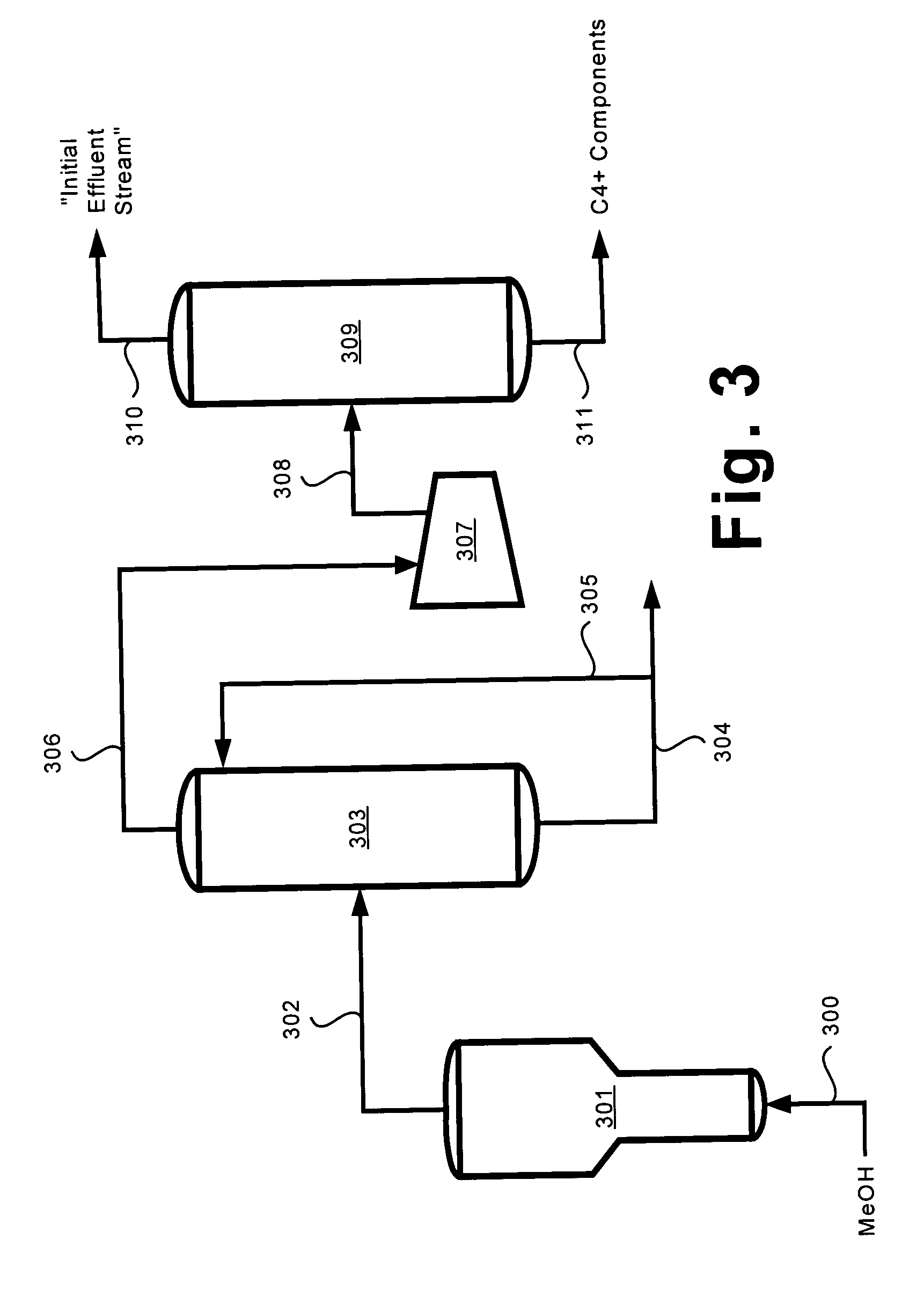Recovery of ethylene and propylene from a methanol to olefin reaction system
a technology which is applied in the field of recovery systems of ethylene and propylene, can solve the problems of undetectable oxygenate compounds, undetectable oxygenate concentrations, and general inefficiency, and achieve the effects of minimizing equipment counts, efficient separation of these components, and high efficiency in removing dm
- Summary
- Abstract
- Description
- Claims
- Application Information
AI Technical Summary
Benefits of technology
Problems solved by technology
Method used
Image
Examples
Embodiment Construction
[0015] Introduction
[0016] The present invention provides new highly-efficient separation processes and systems for separating polymerization-grade ethylene and propylene from an “initial effluent stream,” defined herein as a stream containing dimethyl ether (DME), ethane, ethylene and propylene. Additionally, the initial effluent stream optionally includes one or more of propane, acetylene, methyl acetylene, propadiene, methane, hydrogen, carbon monoxide, carbon dioxide and C4+ components (aliphatic and / or olefinic). In one particularly preferred embodiment, the initial effluent stream is derived from the product effluent of a methanol-to-olefin (MTO) reaction process, described in detail below. It has been discovered that an efficient separation of DME from the other components in the initial effluent stream can be realized when DME is selectively removed, at least partially, in a first washing step, followed by separation of the remaining components in additional separation steps...
PUM
| Property | Measurement | Unit |
|---|---|---|
| Percent by mass | aaaaa | aaaaa |
| Percent by mass | aaaaa | aaaaa |
| Percent by mass | aaaaa | aaaaa |
Abstract
Description
Claims
Application Information
 Login to View More
Login to View More - R&D
- Intellectual Property
- Life Sciences
- Materials
- Tech Scout
- Unparalleled Data Quality
- Higher Quality Content
- 60% Fewer Hallucinations
Browse by: Latest US Patents, China's latest patents, Technical Efficacy Thesaurus, Application Domain, Technology Topic, Popular Technical Reports.
© 2025 PatSnap. All rights reserved.Legal|Privacy policy|Modern Slavery Act Transparency Statement|Sitemap|About US| Contact US: help@patsnap.com



